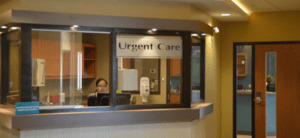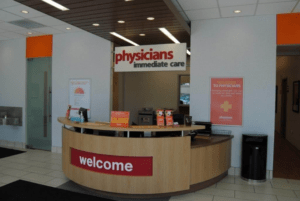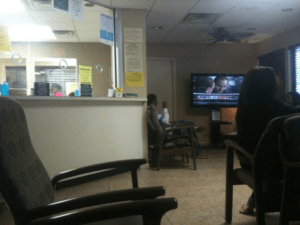If there’s truth to the cliché that “first impressions are everything,” then as a retail and service business, urgent care should put its best foot forward whenever patients enter the center, providing a greeting not dissimilar to what shoppers expect when entering a retail store. In recent weeks I’ve visited three urgent care centers and upon crossing the entry threshold, experienced three completely different “welcomes.”
- In the first center, I was greeted by multiple signs pointing me to a clipboard, which instructed me to “sign in and sit down” and “wait until called by the reception staff.” I got the message loud and clear: Do not disturb the staff—they will attend to you when they’re Of course, there was no communication as to expected wait time, number of people in the queue, or whether the urgent care could even meet my presenting need. Nobody asked if I had shortness of breath, bleeding, dizziness or other symptoms requiring immediate attention. And none of the staff noticed that after I saw a half dozen people waiting, I turned around and walked right back out to try a competitor instead.

- In the second center, upon approaching the front desk the receptionist rolled aside the glass protective window (surrounded by photocopied patient notices taped to the wall) and asked, “Are you here to be seen?” (Isn’t everyone here to be seen?) She then snapped, “Insurance card and driver’s license,” handed me a clipboard with a printed form that had yellow highlighter scribbled on it and added, “Fill out all the sections in yellow.” To complete the stack of paperwork, she handed me a ballpoint pen taped to a large tongue depressor (presumably to deter theft of their pens). Before I turned away, she slid the glass window back shut and shifted her gaze back to her computer monitor. I had a number of questions, including wait time and copay due, but she seemed disinterested in conversation. She thus didn’t notice when I left the clipboard on the counter and, again, walked out to try a competitor instead.

- In the third center, I opened the front door and a receptionist behind a wide-open front desk looked up from her paperwork and said, “Welcome to (insert name) urgent care! How can we help you today?” When I said I would like to see a doctor, she said, “Great! The wait is currently about 30 minutes. To start the registration process, I will need to get some information from you….” The welcome was cheery and the information provided was useful in making a decision to stay and use the center.

In the 1980s television sit-com Cheers!, when the fictional character Norm arrived at the “place where everyone knows your name,” he was greeted by the crowd saying in unison, “Norm!” Every patient arriving at your urgent care center should get a welcome greeting that’s just as enthusiastic and heartfelt. The front desk should be clean and organized—which means it’s open, not hidden behind glass like some motel that rents rooms by the hour; signage is limited (no handwritten or photocopied ad hoc signage); and no clutter. Staff should be standing, attired in uniform, wearing nametags, and paying attention to the person entering and leaving the front door.
The one chance to make a good impression occurs after your center has already made significant marketing investments to draw a prospective patient in off the street. If that patient turns around and leaves because he or she doesn’t feel welcome or is otherwise put off by your “reception” staff, then your entire marketing investment has been lost and you must advertise more to find another patient off the street. If you turn away enough patients, over time you could conceivably exhaust available patients in the community, setting the center up for failure.
Alan A. Ayers, MBA, MAcc
VP, Strategic Initiatives, Practice Velocity, LLC;
Practice Management Editor,
JUCM—The Journal of Urgent Care Medicine

